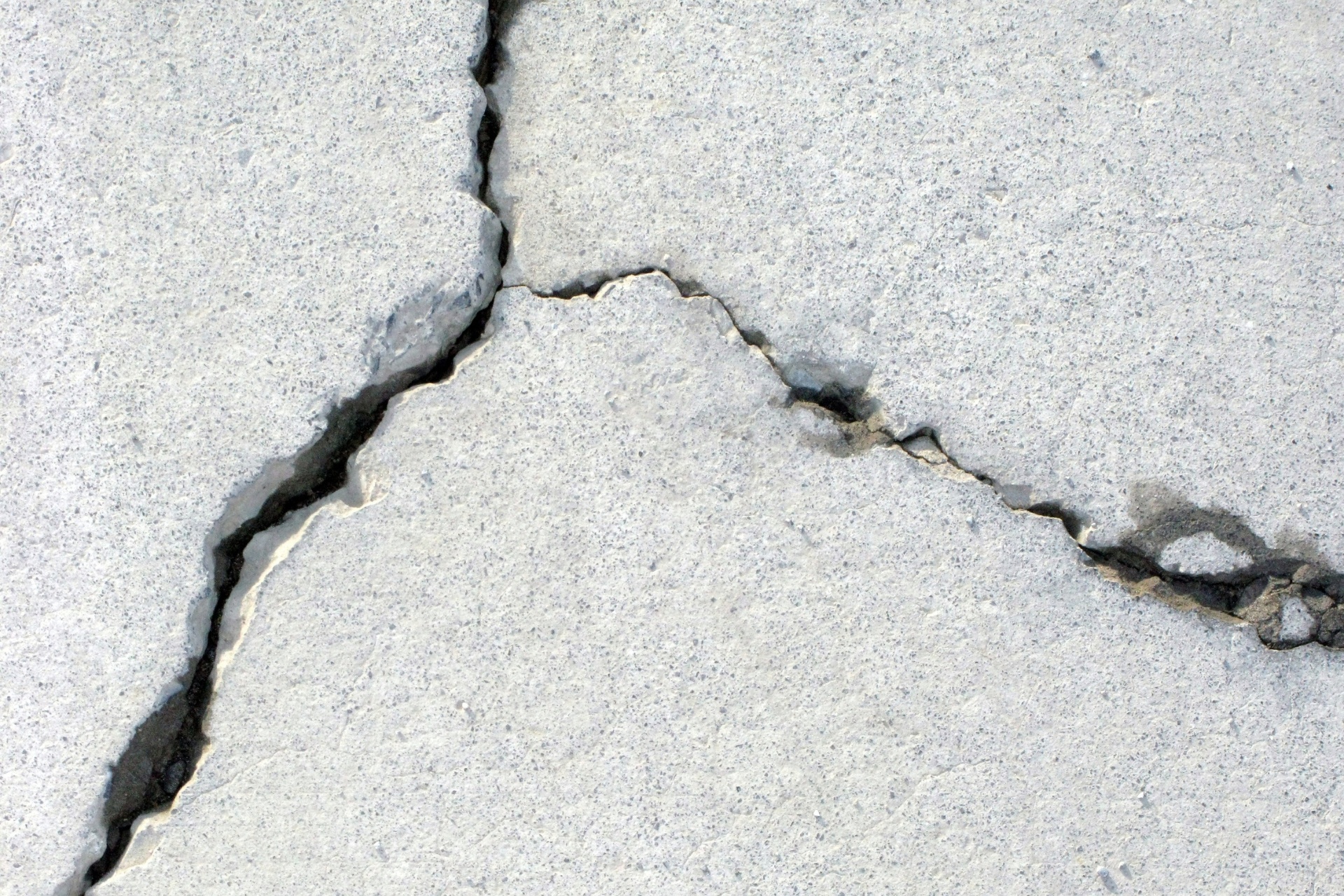Concrete cracks due to shrinkage during curing, where it loses moisture and reduces in volume. Excessive load and stress also lead to cracks, especially if the load-bearing capacity isn’t properly assessed.
Environmental conditions like temperature fluctuations and moisture levels significantly impact its integrity, causing expansion, contraction, and moisture penetration issues.
Additionally, ground movement and settlement weaken concrete’s support, and poor construction practices, such as inadequate compaction and improper jointing, accelerate deterioration.
1. Shrinkage During Curing
Shrinkage during curing is a primary cause of concrete cracking, resulting from the concrete’s volume reduction as it loses moisture.
This process is inherent and can significantly affect the structural integrity and aesthetic appeal of concrete structures. Managing water content and adopting appropriate curing methods are critical to mitigating these effects.
The water content in the concrete mix plays a key role in shrinkage. A higher water-to-cement ratio may facilitate workability but also increases the potential for shrinkage as the concrete dries.
Therefore, it’s important to balance the mix design to ensure sufficient hydration without excess water that contributes to shrinkage and, subsequently, cracking.
Curing methods directly impact how concrete dries and hardens and influences shrinkage rates.
Standard practices include maintaining a favorable environment for gradual moisture loss, which can be achieved through wet curing or using curing compounds that retain moisture within the concrete.
Such strategies help in controlling the rate of shrinkage and minimize cracking.
Understanding the interplay between water content and curing methods allows you to address shrinkage issues preemptively.
By optimizing these factors, you can enhance the durability and longevity of concrete structures, reducing the likelihood of cracking due to shrinkage during curing.
2. Excessive Load and Stress
Beyond the natural process of shrinkage, excessive load and stress significantly contribute to concrete cracking, demanding careful consideration during the structural design and construction phases.
When a structure is subjected to loads greater than what the concrete can support, stress concentrations result, eventually leading to cracks.
This scenario is often caused by inadequate assessment of the concrete’s load-bearing capacity or by overlooking the potential for dynamic loads that exceed the static loads considered during design.
Material quality plays a pivotal role in how well concrete can withstand excessive loads and stress. High-quality materials, appropriately mixed and cured, improve the concrete’s strength and resilience against cracking under heavy loads.
Conversely, poor material quality, including improper ratios of water, cement, and aggregate, can weaken the concrete, making it more susceptible to cracking under stress.
Design flaws also contribute significantly to this issue. Inadequate reinforcement placement, insufficient concrete cover, and lack of consideration for load distribution paths can all lead to excessive stress concentrations in certain areas of the concrete structure.
These design oversights can result in premature cracking when the concrete is subjected to normal or unexpected loads.
3. Environmental Conditions
Environmental conditions, including temperature fluctuations and moisture levels, play a critical role in the formation of cracks in concrete structures.
Temperature fluctuations can cause the concrete material to expand and contract. During hot weather, concrete expands; when the temperature drops, it contracts.
If the concrete can’t move freely due to restrictive conditions or is unevenly exposed to these temperature changes, stress points are created, leading to cracks.
Moisture variation further complicates the situation. Concrete is porous, allowing water to penetrate its surface. This can be particularly problematic in freeze-thaw cycles.
When absorbed water freezes, it expands by about 9%, exerting pressure from within the concrete. Upon thawing, the concrete contracts, creating tensile stresses that can cause cracking.
Additionally, high humidity levels can lead to differential drying shrinkage, another common cause of cracking.
It’s vital to account for these environmental conditions during the design, mixing, placement, and curing processes of concrete.
Implementing control joints, using materials that can withstand expected temperature and moisture variations, and sealing regularly can help reduce the risk of cracking due to environmental factors.
4. Ground Movement and Settlement
While environmental conditions significantly impact concrete’s integrity, ground movement and settlement also pose substantial risks to its durability.
When the earth beneath the concrete shifts or settles, it leads to stress that the material can’t always accommodate. This movement isn’t trivial; it’s a powerful force that can crack even the strongest concrete.
Soil erosion plays a major role here. This is a process where water or wind removes the soil supporting the concrete. Without solid ground support, concrete slabs are prone to uneven settling, which inevitably leads to cracking.
Water intrusion exacerbates this issue by weakening the soil’s structure, making it even less stable. The constant cycle of soil getting wet and drying out can cause the soil to expand and contract, further destabilizing the foundation for concrete.
Addressing these challenges requires a proactive approach.
Techniques such as improving drainage around concrete structures to prevent water intrusion and using soil stabilization methods can significantly reduce the risk of ground movement and settlement impacting concrete’s integrity.
5. Poor Construction Practices
Poor construction practices significantly undermine concrete’s durability, leading to premature cracks and structural weaknesses.
Inadequate compaction and improper jointing are key factors that compromise the integrity of concrete structures.
Inadequate compaction leaves voids and air pockets within the concrete mix, reducing its density and, consequently, its strength.
This flaw doesn’t just diminish the concrete’s ability to bear loads but also accelerates deterioration due to moisture infiltration and freeze-thaw cycles.
Ensuring uniform and thorough compaction during the pouring process is key to avoiding these pitfalls.
Improper jointing further exacerbates the risk of cracking. Joints in concrete serve to control the location of cracks that occur as the concrete contracts and expands with temperature changes.
If these joints aren’t correctly designed and placed, the concrete is more likely to crack in unplanned areas, compromising its structural integrity and aesthetic appeal.
Precise planning and execution of joint placement are essential to manage the natural movements of concrete and prevent unsightly and damaging cracks.

